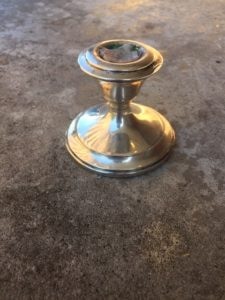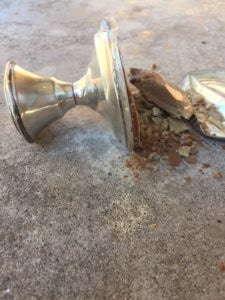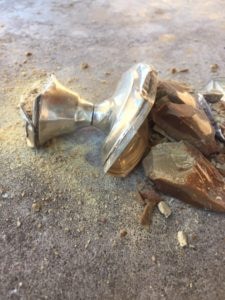Many of the heavy, more common sterling silver items like candlesticks, some salt and pepper shakers, bowls and most knives are weighted with a non-silver products. This is a common practice. So what does it mean when you have weighted sterling? Many of these items have (non-silver) weighted material in the handle or base. This is to provide the feeling of mass and allow the manufacturer to produce a larger, heavier item while using substantially less silver.
The most commonly used weighting material is pine rosin. Rosin has a stove temperature melting point but is hard and brittle at room temperature. More importantly, it’s inexpensive and easy to work with. Lead is sometimes used, but is more difficult and expensive to work with.
Since mass is the main determinant to establish the price of your weighted items, if an item is artificially weighted, it will be less valuable as compared to an item that is solid silver.
When we weight the item, the weight of the rosin or led is deducted from the final weight of the item. You’ll only receive money for the silver. In many items the actual silver is simply a heavy foil and not solid at all. (Imagine 10 sheets of aluminum foil stacked up)
When everything is taken into account, what LOOKED and FELT heavy actually can be surprisingly lightweight.
Take a look at the photos below. The first photo shows a candle stick holder which weighs about 7 ounces. After the base has been broken, all the weighted material (in this case, rosin) has fallen out. More will be removed from the actual cup where the candle is inserted. When this item is cleaned up, the weight is reduced to 1.8 ounces.
A dramatic weight loss of close to 90%!
Please keep this in mind when forming your expectations about the value of the items you may wish to sell.







